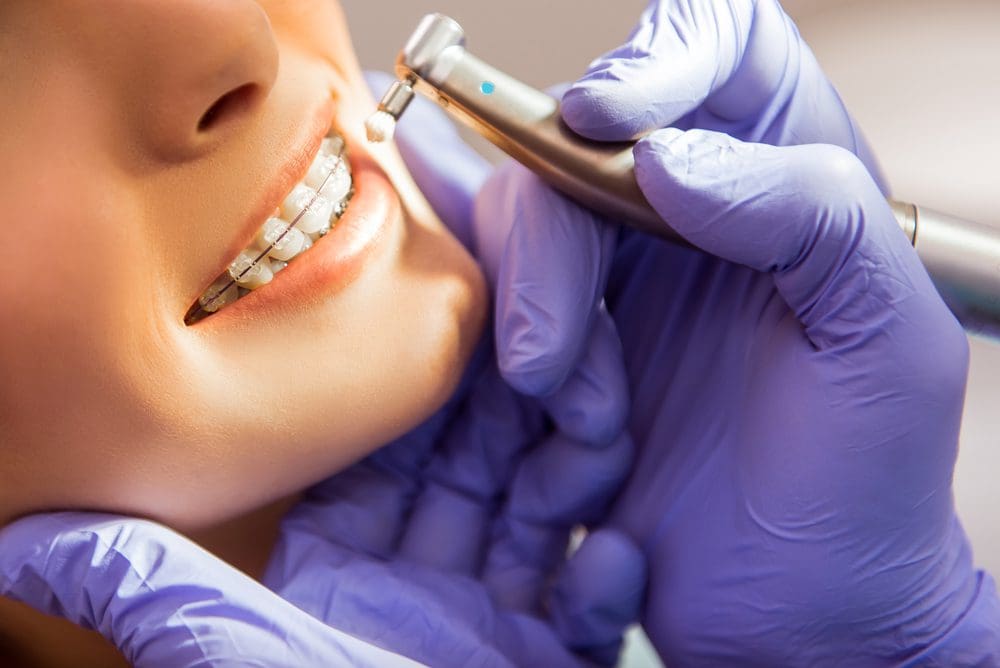Choosing the most effective Cumming Orthodontics for Effective Braces and Aligners Solutions
Choosing the most effective Cumming Orthodontics for Effective Braces and Aligners Solutions
Blog Article
Comprehensive Guide to Orthodontics Procedures for Fixing Oral Imbalances
In the world of orthodontics, the trip to achieving a completely straightened smile entails a myriad of procedures tailored to remedy oral misalignments. From conventional dental braces to unseen aligners and also surgical alternatives, the area of orthodontics supplies a series of services to deal with differing degrees of oral irregularities. Recognizing the intricacies of each treatment, including their mechanisms, benefits, and possible disadvantages, is crucial in making informed decisions concerning one's orthodontic therapy. As we browse with the thorough overview to orthodontic treatments for fixing oral imbalances, the intricate details of each technique will unfold, dropping light on the path toward a unified and useful oral positioning.
Orthodontic Procedures Introduction

Regular adjustments and monitoring are critical parts of orthodontic treatment to guarantee development is on track and to make any type of needed adjustments along the means. By undergoing orthodontic procedures, patients can not only achieve a straighter grin yet additionally improve their overall oral health and feature.
Typical Dental Braces: Just How They Work
When considering orthodontic therapies for oral misalignments, typical dental braces attract attention as a reliable method for dealing with teeth positioning. Typical dental braces contain brackets, cables, and bands that interact to apply constant pressure on the teeth, progressively moving them right into the desired placement. The brackets are connected to the teeth using an unique adhesive, and the wires are threaded via the brackets. By changing the stress of the wires, orthodontists can manage the instructions and force put on each tooth, directing them right into proper positioning with time.
One secret element of how traditional braces work is the process of bone renovation. As pressure is applied to the teeth with the braces, the bone surrounding the teeth is reshaped to support the new tooth settings. This improvement is crucial for the long-term stability of the fixed positioning. Individuals will certainly require regular modifications at the orthodontist's office to make sure the dental braces proceed to use the right stress for reliable teeth activity.
Undetectable Aligners: Advantages And Disadvantages
Invisible aligners offer a hassle-free and very discreet option to conventional braces for correcting oral misalignments. These clear, personalized trays are essentially undetectable when used, making them an appealing alternative for people seeking a more aesthetically pleasing orthodontic therapy. Among the primary benefits of undetectable aligners is their removability, enabling easier upkeep of dental hygiene contrasted to conventional useful link braces. People can eliminate the aligners prior to eating or cleaning their teeth, minimizing the risk of food obtaining stuck in the device and simplifying the cleaning procedure.

Surgical Orthodontic Options
Surgical treatments in orthodontics existing sensible alternatives for resolving intricate oral misalignments that might not be successfully settled via standard orthodontic therapies. While standard braces and unseen aligners can remedy lots of orthodontic problems, certain instances call for medical intervention to accomplish ideal results. Surgical orthodontic options are typically advised for serious malocclusions, significant jaw discrepancies, and cases where the underlying bone structure needs modification to attain appropriate alignment.
One typical medical orthodontic treatment is orthognathic surgical procedure, which includes repositioning the jaws to deal with practical issues such as trouble eating or speaking. This surgery is usually done in collaboration with an orthodontist that aids line up the teeth prior to and after the procedure. Surgical orthodontics might likewise entail procedures to reveal impacted teeth, remove excess periodontal tissue, or improve the jawbone to create a much more harmonious face account.
Before taking into consideration surgical orthodontic options, people undergo an extensive evaluation to figure out the necessity and possible benefits of such interventions. invisalign. While surgical procedure may seem challenging, it can considerably boost both the function and appearances of the smile in cases where traditional orthodontic therapies drop short
Retainers and Post-Treatment Care

Post-treatment treatment involves web following the orthodontist's directions faithfully. This might include proper oral hygiene practices, going to follow-up appointments, and putting on the retainers as recommended. Failure to follow post-treatment care guidelines can result in regression, official website where the teeth progressively return towards their initial positions. Regular retainer wear, good oral health, and normal dental exams are crucial for preserving the outcomes accomplished via orthodontic surgical treatment and ensuring the long-lasting stability of the dealt with oral positioning.
Final Thought
In verdict, orthodontic treatments provide numerous alternatives for correcting dental misalignments. Surgical orthodontic choices are readily available for more serious misalignments. On the whole, orthodontic treatments can effectively enhance oral health and aesthetic appearance.
As we browse via the comprehensive overview to orthodontic treatments for fixing oral misalignments, the detailed information of each method will unravel, shedding light on the course toward a harmonious and functional dental placement. - aligners
One of the most usual orthodontic therapies is the usage of braces, which are composed of steel braces and wires that apply mild pressure to gradually change teeth right into the desired position.When taking into consideration orthodontic treatments for dental misalignments, traditional dental braces stand out as a time-tested technique for remedying teeth positioning. Furthermore, unnoticeable aligners might not be ideal for complex orthodontic problems that need even more substantial teeth movement, as they are typically advised for light to moderate cases. Retainers are tailor-made orthodontic tools made to hold teeth in their corrected placements after the conclusion of orthodontic therapy.
Report this page